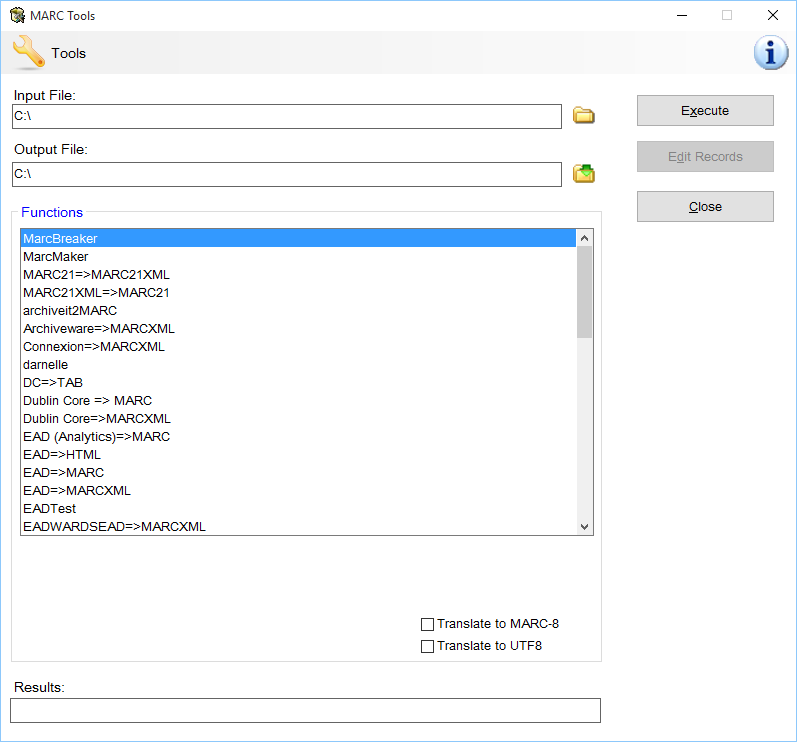In this Chapter:
- Getting started with MARC Tools
- Where do I find things?
- Processing MARC Data
- Handling Invalid Data
Getting Started
One of MarcEdit’s biggest strengths and weaknesses is that it supports many different processes and workflows. This is a good thing because the program is oftentimes flexible enough to fit within a users existing processes, but can be challenging for new users, because there are oftentimes so many ways to do the same thing.
When MarcEdit was first developed for public use, the application had very rigid lines drawn between the parts of the application that handled binary MARC data and those that handled MarcEdit’s mnemonic format. The MARC Tools component was the part of the application that handled that compiling and decompiling of MARC data. However, as the program has evolved, these lines have blurred and the role that the MARC Tools component plays has shifted as well.
I believe that the MARC Tools component is still the primary jumping off point for users when the are looking to compile and decompile MARC data. But this part of the application has also been transformed into more of a hub, providing access to MARC tools that perform actions upon the files themselves (not the individual records). While again, users can certainly access these tools from a number of different places within the application, the MARC Tools component provides a singular portal for this information.
MARC Tools Window
Figure 1 shows the current iteration of the MARC Tools window. It also illustrates something important about MarcEdit; the MARCEngine, the code library that handles all metadata processing within MarcEdit, only includes 4 built in processing algorithms:
- MarcBreaker — This function decompiles binary MARC data into MarcEdit’s mnemonic format.
- MarcMaker — This function compiles MarcEdit’s mnemonic file format into MARC.
- MARC=>MARC21XML — This function translates binary MARC data to MARC21XML.
- MARC21XML=>MARC — This function translates MARC21XML data to binary MARC.
These are the only 4 functions directly coded into the MARCEngine, and yet, MarcEdit provides a number of other XML translation functions that have the ability to convert data from an XML metadata format into another user-defined format (be that MARC, MARC21XML, or Other). Unlike MarcEdit’s built in metadata processing routines, MarcEdit supports XML metadata crosswalking through the use of the eXtensible Stylesheet Language (XSLT), many of which MarcEdit provides on installation or can be created by the user. The net effect of this design is that MarcEdit is able to provide a set of tools for users wanting to work with bibliographic data from a wide range of sources and formats, without becoming a bottleneck when it comes to supported metadata translations. The challenge, however, is that the translations that are provided in MarcEdit are oftentimes more like templates — they implement the most common method for translation between metadata formats, which may, or may not completely suite one’s needs. In those cases where enhancements or changes need to be made, there is an assumption that users will be able to edit the XSLT files directly and update these processes as necessary.
